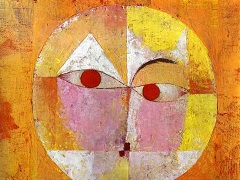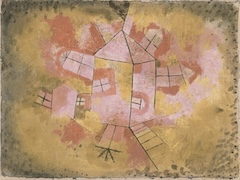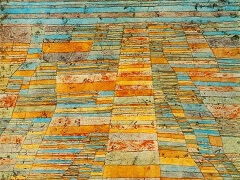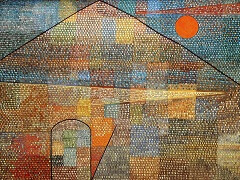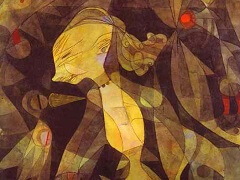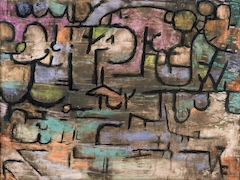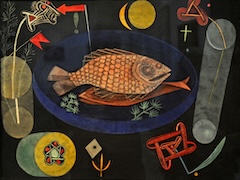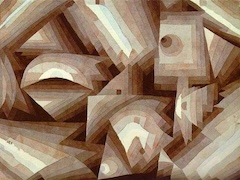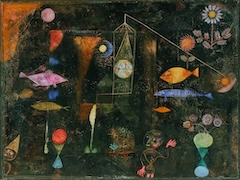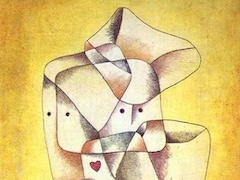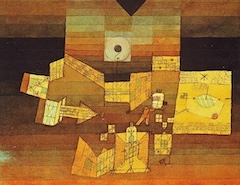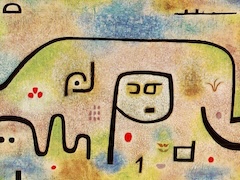Twittering Machine, 1922, by Paul Klee
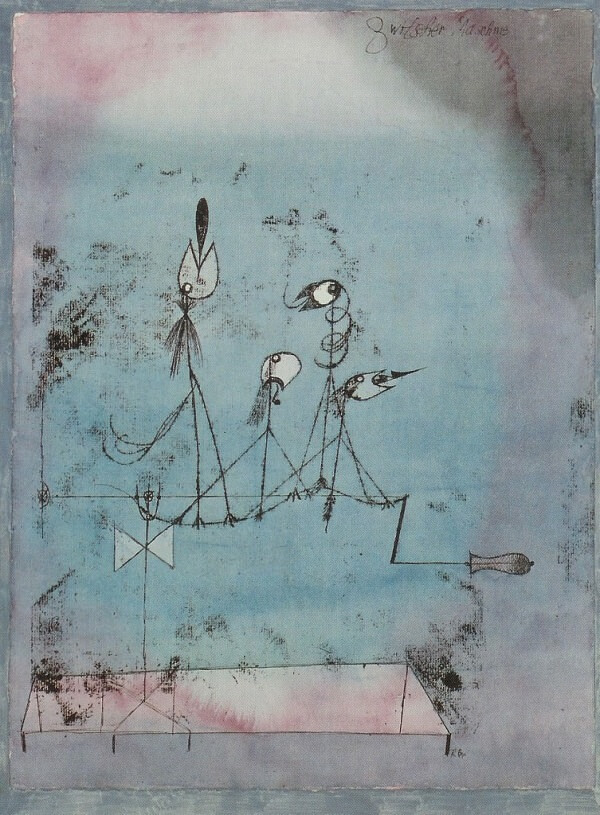
Twittering Machine (Die Zwitscher-Maschine) is a 1922 watercolor and pen and ink oil transfer on paper by Paul Klee. Like other artworks by Klee, it blends biology and machinery, depicting a loosely sketched group of birds on a wire or branch connected to a hand-crank. Interpretations of the work vary widely: it has been perceived as a nightmarish lure for the viewer or a depiction of the helplessness of the artist, but also as a triumph of nature over mechanical pursuits. It has been seen as a visual representation of the mechanics of sound.
Originally displayed in Germany, the image was declared "degenerate art" by Adolf Hitler in 1933 and sold by the Nazi party to an art dealer in 1939, whence it made its way to New York. One of the better known of more than 9,000 works produced by Klee, it is among the more famous images of the New York Museum of Modern Art (MoMA). It has inspired several musical compositions and, according to a 1987 magazine profile in New York Magazine, has been a popular piece to hang in children's bedrooms.
The picture depicts a group of birds, largely line drawings; all save the first are shackled on a wire (or, according to The Washington Post, a "sine-wave branch") over a blue and purple background which the MoMA equates with the "misty cool blue of night giving way to the pink flow of dawn". Each of the birds is open-beaked, with a jagged or rounded shape emerging from its mouth, widely interpreted as its protruding tongue. The end of the perch dips into a crank.

